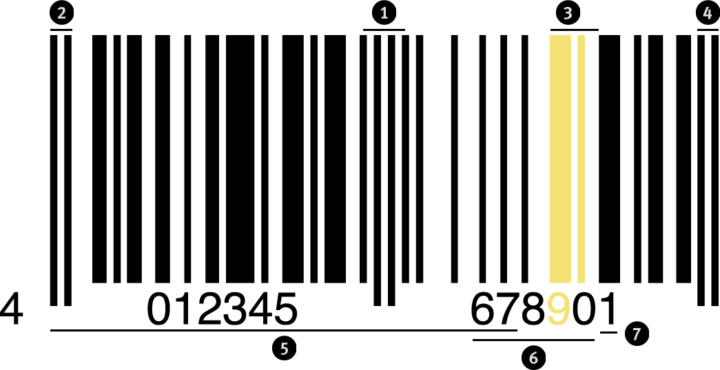
Smart lines
It all started in a supermarket in Ohio with a pack of chewing gum on June 26, 1974. It was the date on which the first ever code was scanned: the Big Beep so to speak. However, the idea was actually conceived a lot earlier: it’s exactly 70 years old this year. In October 1949, the American students Joseph Woodland and Bernard Silver filed a patent for their printed “Morse code.” It marked the birth of a new form of storing information. Without barcodes and their evolutions – the two-dimensional QR code being the most prominent one – today’s retail, logistics and industrial world would not be able to operate: state-of-the-art connected warehouse systems that automatically pick and place goods; laboratories that reliably match urine and blood samples with the respective patients; consumers that print out their concert and flight tickets at home.
Barcodes have been driving a myriad of developments and entire industries have changed as a result. However, it took a long time for all this to become possible – a period that stretched like chewing gum to use the same metaphor – because originally there were no optical scanners to read Woodland and Silver’s bars. Their code only became useful when laser technology was introduced. Today, cash register scanners beep a billion times a day worldwide. Barcodes are omnipresent, yet nearly invisible: inconspicuous multi-talents that have become one of the most important tools of modern life.
The EAN-13 code is a European Article Number with 13 digits. It is a one-dimensional code. The infrared or laser scanner distinguishes only between the reflection of the light on the spaces and the non-reflection on the thin bars. If the bar has a color, this stands for digital code 1, a space in between corresponds to the digital code 0. The scanner is able to detect if several bars or spaces are placed side by side and read them individually. The result of the optical reading of the bars including their digital conversion corresponds exactly to the depicted sequence of numbers.




On the outside and in the middle, every code is always delimited by the same start and stop characters and the delimiter. Encoded are 6 digits to the left and 6 digits to the right of the delimiter.

Each digit consists of 7 bits, i. e. 7 times 1 or 0 – but always exactly 2 bars and 2 spaces of varying thickness. On the left-hand side, the encoding of all digits begins with a space and on the right-hand side with a bar. Consequently, there are several charts for encoding the digits from 0 to 9. This ensures that the decoding is correct even when the barcode is read upside down.


12 digits represent the article number – divided into a base number with the country and company …

… and the article number.

The 13th digit is a check digit which is calculated from the 12 digits according to a formula.


